Birds bring life, color, and cheerful sounds to our outdoor spaces, turning ordinary gardens into vibrant ecosystems. While many bird enthusiasts focus on hanging feeders that attract perching species, there’s a whole world of ground-feeding birds that often get overlooked. Cardinals, sparrows, juncos, doves, and towhees prefer to forage on or near the ground, following their natural feeding behaviors. Creating a welcoming environment for these feathered friends not only enhances your birdwatching experience but also supports local biodiversity. This comprehensive guide will walk you through proven strategies for attracting a variety of ground-feeding birds to your yard, from selecting the right foods to creating safe habitats that will keep them coming back season after season.
Understanding Ground-Feeding Birds
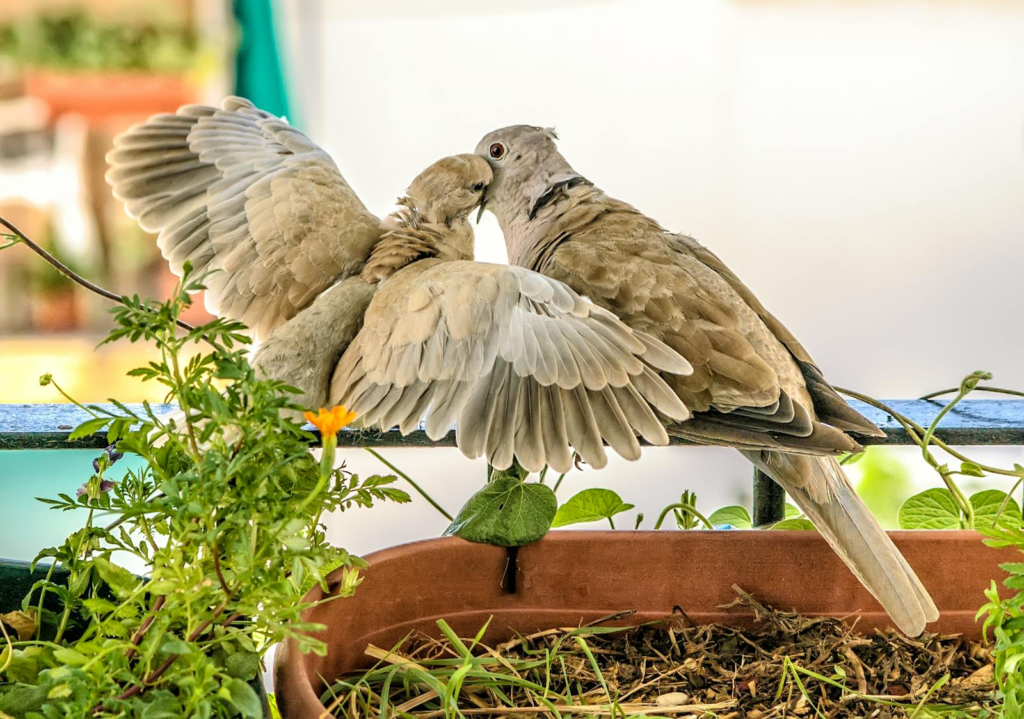
Ground-feeding birds have evolved specific adaptations that make them more comfortable foraging at ground level rather than at elevated feeders. Species like quail, towhees, doves, juncos, and many sparrows possess strong legs and feet designed for scratching and walking rather than perching for extended periods. Their feeding behavior typically involves scratching or shuffling through leaf litter and soil to uncover seeds, insects, and other small food items. Unlike aerial or tree-dwelling birds, these species often have more cryptic coloration that helps them blend with the ground for protection from predators. Understanding these natural behaviors is the first step in creating an environment that will attract these birds to your yard by catering to their specific needs and instincts.
Choosing the Right Ground Feeding Station
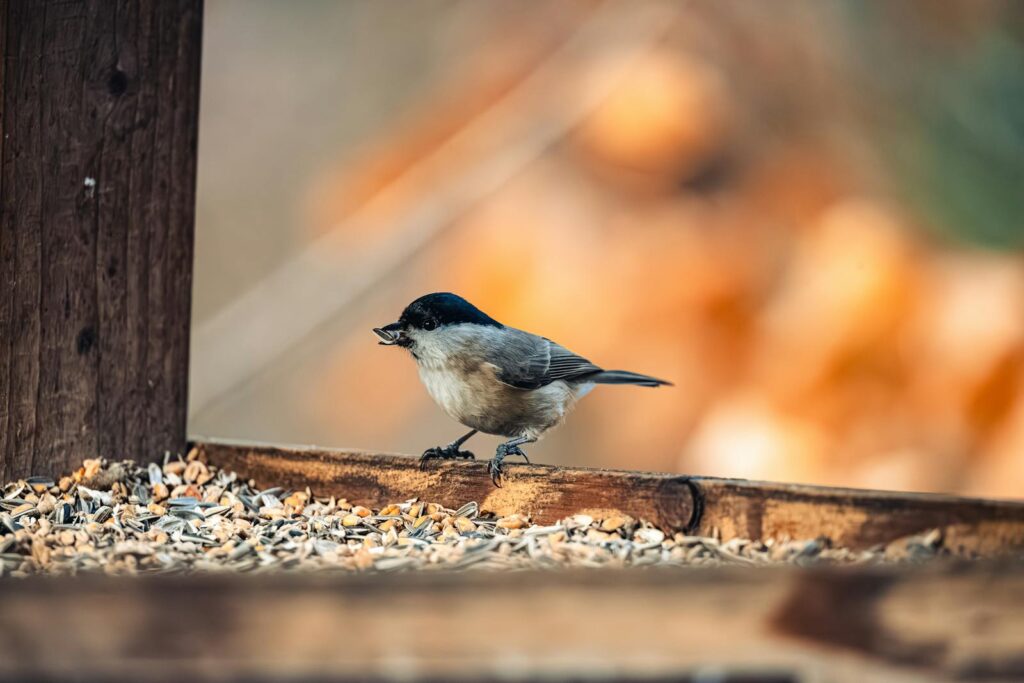
Selecting an appropriate feeding station is crucial for attracting ground-feeding birds while keeping them safe. Platform feeders set on short stands (1-2 feet off the ground) provide an excellent compromise, offering birds a safe elevation while mimicking ground feeding conditions. Alternatively, consider using ground trays specifically designed for bird feeding, which feature drainage holes to prevent seed spoilage and edges to contain the food. For a more natural approach, create feeding areas directly on packed dirt or short grass in open areas where birds can easily spot approaching predators. Position your feeding station near shrubs or bushes (about 10-15 feet away) to provide quick escape routes while avoiding placing feeders so close to dense vegetation that cats or other predators could use it for ambush.
Selecting the Best Foods for Ground Feeders
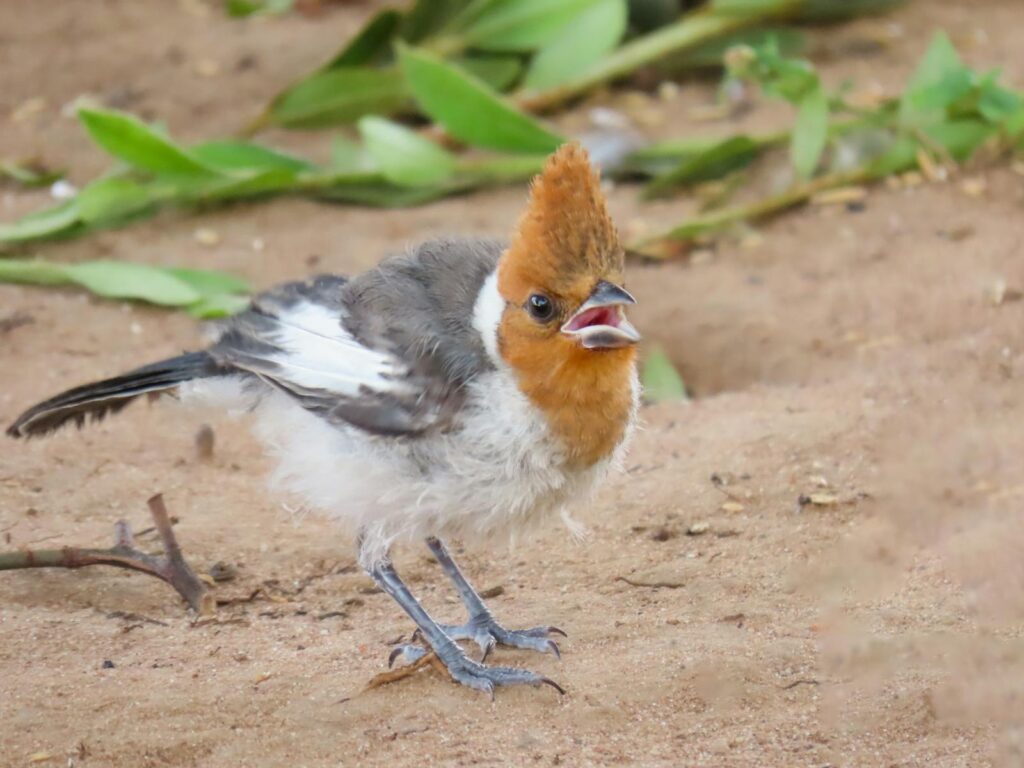
Ground-feeding birds typically prefer larger, heartier seeds that are easy to spot and handle. White millet is particularly attractive to many ground feeders like sparrows, juncos, and towhees, while cracked corn appeals to doves, quail, and native sparrows. Offering black oil sunflower seeds scattered on the ground or in low platform feeders will attract cardinals, grosbeaks, and other larger ground-feeding species. During breeding season, high-protein options like mealworms (dried or live) provide essential nutrition for birds feeding their young. Avoid using mixed bird seed with fillers like milo or red millet, as these often end up wasted and may attract unwanted rodents. Freshness is crucial for ground feed, so only put out what birds can consume in a day or two to prevent mold growth and bacterial contamination.
Creating a Bird-Friendly Landscape
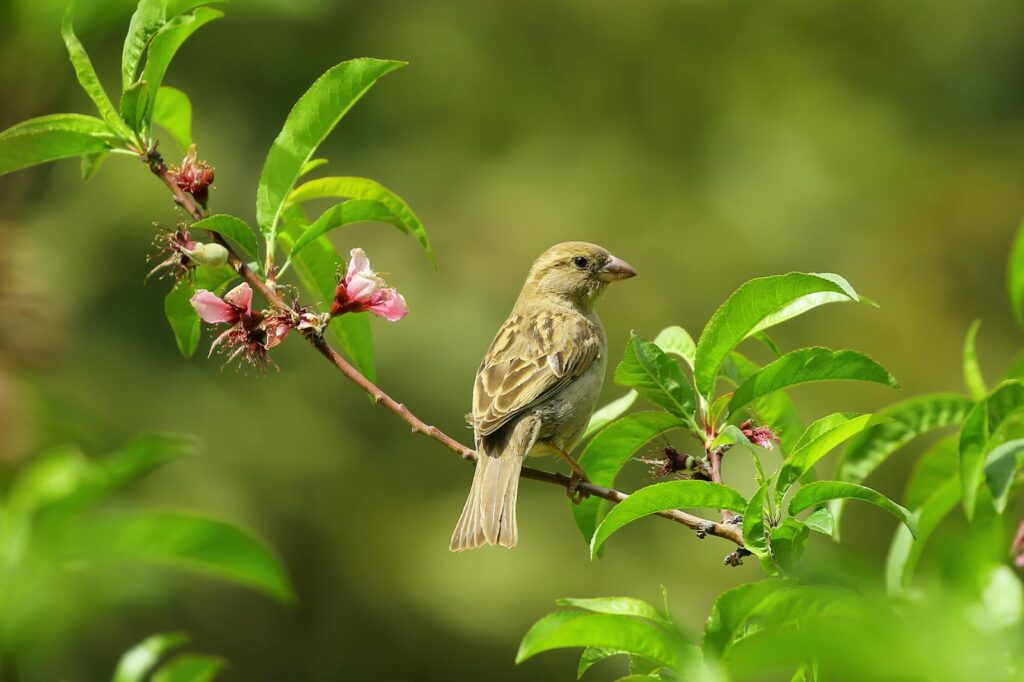
Landscaping plays a vital role in attracting ground-feeding birds by providing both food sources and security. Incorporate native plants that produce seeds favored by local ground-feeding species, such as coneflowers, black-eyed Susans, and various native grasses. Leave some areas of your yard “messy” with leaf litter and fallen branches where birds can forage naturally for insects and seeds. Plant shrubs and small trees around the perimeter of open spaces to create protective cover that birds can retreat to when threatened. Consider creating brush piles in quiet corners of your yard, which serve as valuable microhabitats where birds can shelter and find insects. Remember that reducing or eliminating pesticide use allows natural insect populations to flourish, providing ground-feeding birds with crucial protein sources.
Providing Water Sources
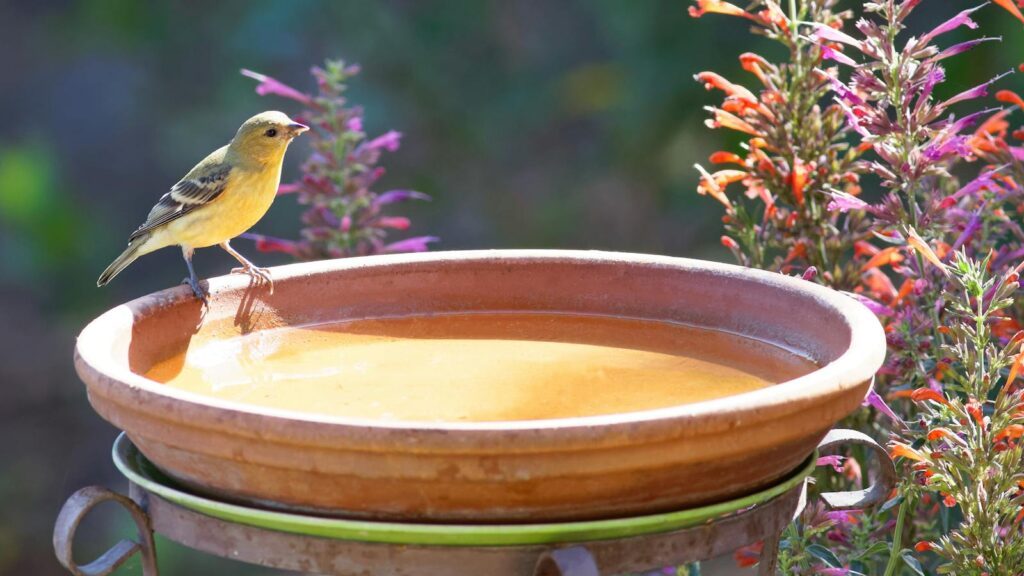
Water is as important as food for attracting ground-feeding birds, and offering appropriate water sources can dramatically increase bird visits to your yard. Ground-feeding birds often prefer shallow water sources they can easily wade into, making ground-level bird baths ideal. Choose models no more than 2-3 inches deep at the center or place stones in deeper baths to create shallow areas. Position water sources in open areas where birds have good visibility while drinking or bathing, reducing their vulnerability to predators. During winter in colder regions, consider heated bird baths to provide much-needed unfrozen water when natural sources are scarce. Keep all water sources clean and fresh by changing the water every few days and scrubbing the bath weekly to prevent algae growth and disease transmission.
Seasonal Feeding Adjustments
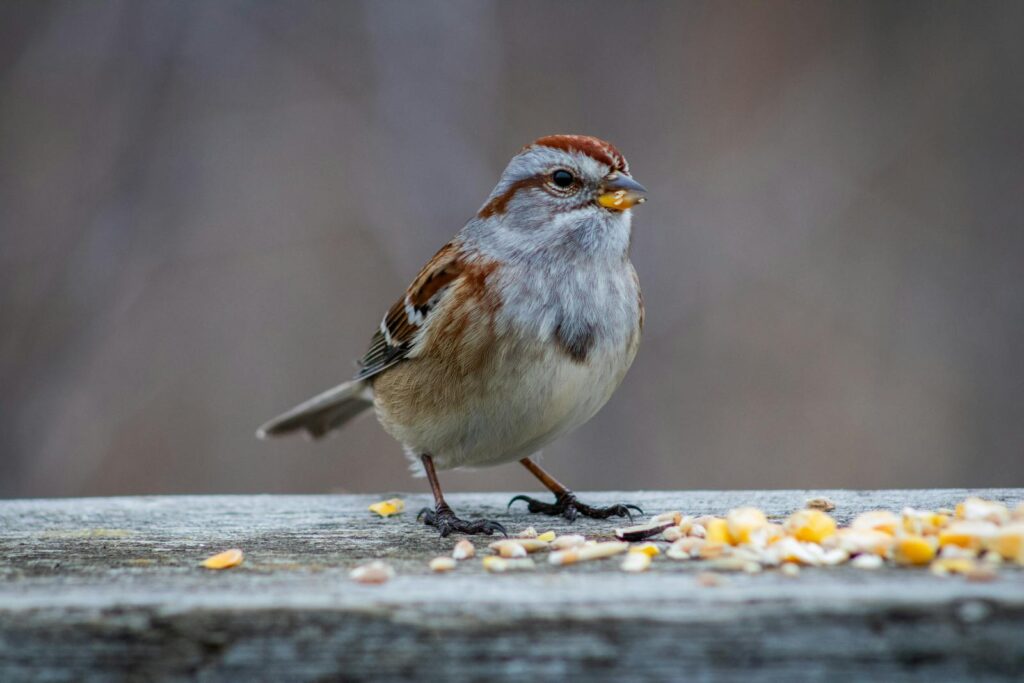
Adapting your feeding strategy to match seasonal changes ensures ground-feeding birds receive appropriate nutrition year-round. In spring, increase protein offerings like mealworms and suet crumbles on ground trays to support nesting birds and their growing families. Summer feeding should include fresh fruits scattered on the ground, such as halved grapes, chopped apples, or berries, which provide hydration and vitamins during hot weather. Fall represents an important transition period when birds begin preparing for winter, making high-fat foods like black oil sunflower seeds and suet particularly valuable on ground platforms. During winter, increase the caloric content of your offerings with peanut pieces, sunflower hearts, and suet crumbles placed in protected ground feeders, and consider feeding twice daily (early morning and mid-afternoon) to help birds maintain their body temperature through cold nights.
Managing Predators and Competition

Ground-feeding birds are particularly vulnerable to predators, making predator management an essential aspect of creating a safe feeding environment. Position feeding areas at least 15 feet from shrubs or structures that could conceal stalking cats or other predators. Consider installing motion-activated sprinklers or other deterrents to discourage neighborhood cats from hunting in your bird-friendly areas. If squirrels become problematic at ground feeding stations, try offering them their own dedicated feeding area away from bird zones, using foods specifically attractive to squirrels like whole corn cobs or peanuts in shells. To discourage larger birds from dominating feeding areas, use cage-like structures with openings large enough for smaller ground-feeding birds but too small for larger species like grackles or pigeons to enter.
Maintaining Cleanliness and Health
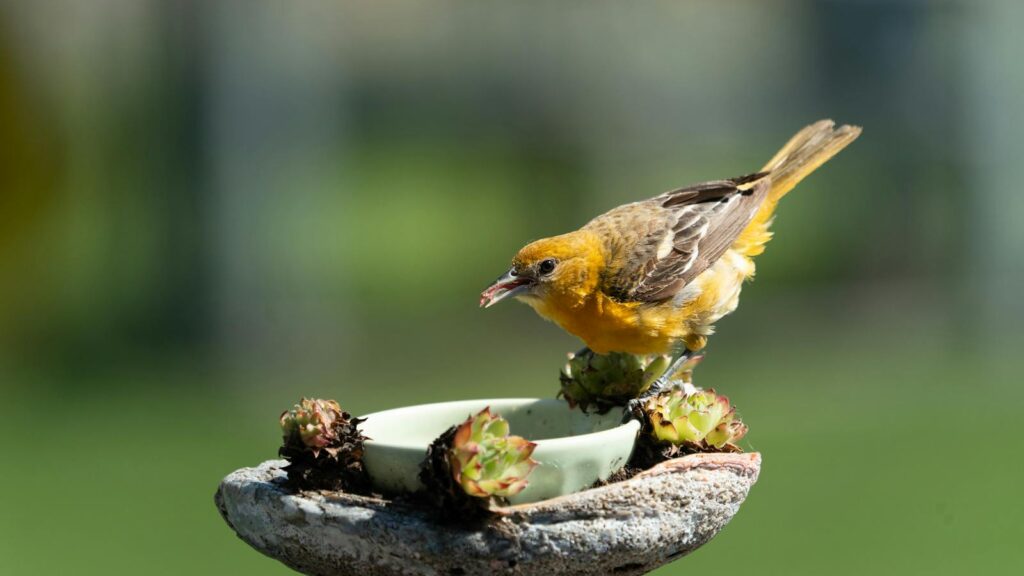
Maintaining hygienic feeding areas is crucial for preventing disease transmission among ground-feeding birds. Regularly rake and remove old seed hulls, droppings, and debris from ground feeding areas at least weekly. During wet weather, consider using only covered platform feeders or trays with drainage holes to prevent seed from becoming moldy. If you notice sick birds at your feeding stations, immediately clean all feeding areas with a 10% bleach solution, remove all old seed, and stop feeding for 1-2 weeks to discourage congregation that can spread disease. Rotate feeding locations around your yard periodically to prevent soil contamination and buildup of harmful pathogens. Remember that cleanliness is especially important during warm, humid weather when diseases spread more readily among birds congregating at feeding sites.
Using Sound and Decoys
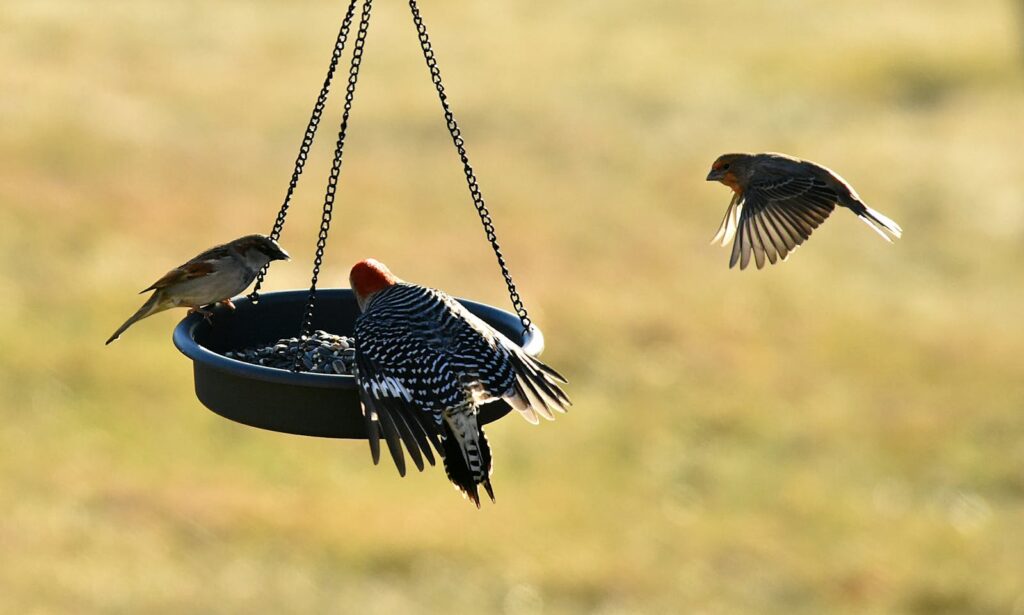
Strategic use of audio and visual cues can significantly enhance your efforts to attract ground-feeding birds to your yard. Installing a small solar-powered water feature creates gentle splashing sounds that birds can hear from a distance, often drawing them to investigate. Bird call recordings played occasionally (not continuously) can signal to passing birds that your yard is safe and resource-rich, though this should be used sparingly to avoid disrupting natural behaviors. Realistic bird decoys positioned near feeding areas can create the impression of an established feeding group, which often attracts live birds who interpret the presence of others as a sign of safety. Position decoys of ground-feeding species like doves or quail near your feeding stations, moving them periodically to maintain their effectiveness and prevent birds from becoming habituated to stationary figures.
Creating Dust Bathing Areas
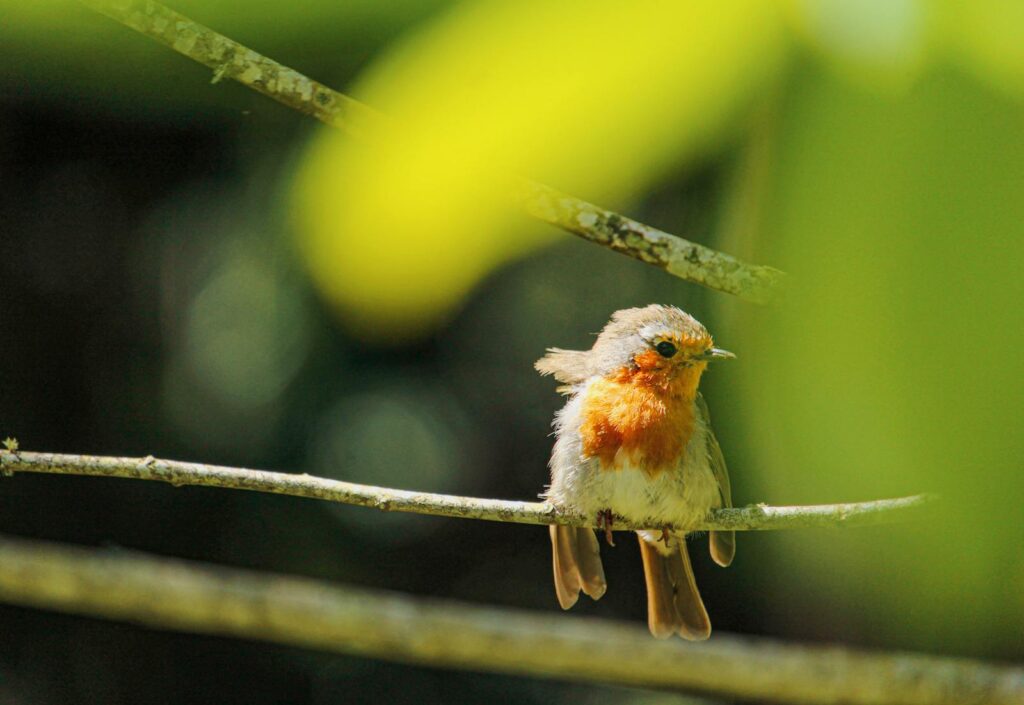
Many ground-feeding birds engage in dust bathing as an essential grooming behavior that helps control parasites and maintain feather condition. Creating dedicated dust bathing areas can make your yard more attractive to these species while allowing you to observe this fascinating natural behavior. Designate a small area of bare, loose soil in a sunny location, ideally at least three feet in diameter and protected from strong winds. If your natural soil is too dense or clay-heavy, consider creating a special dust bath by mixing equal parts fine sand, dry garden soil, and wood ash in a shallow depression. Position these dust bathing spots near but not immediately adjacent to feeding areas, giving birds space to engage in different activities. Refresh your dust bathing area occasionally by turning the soil and adding fresh materials, especially after rain has compacted the surface.
Documenting Your Visitors
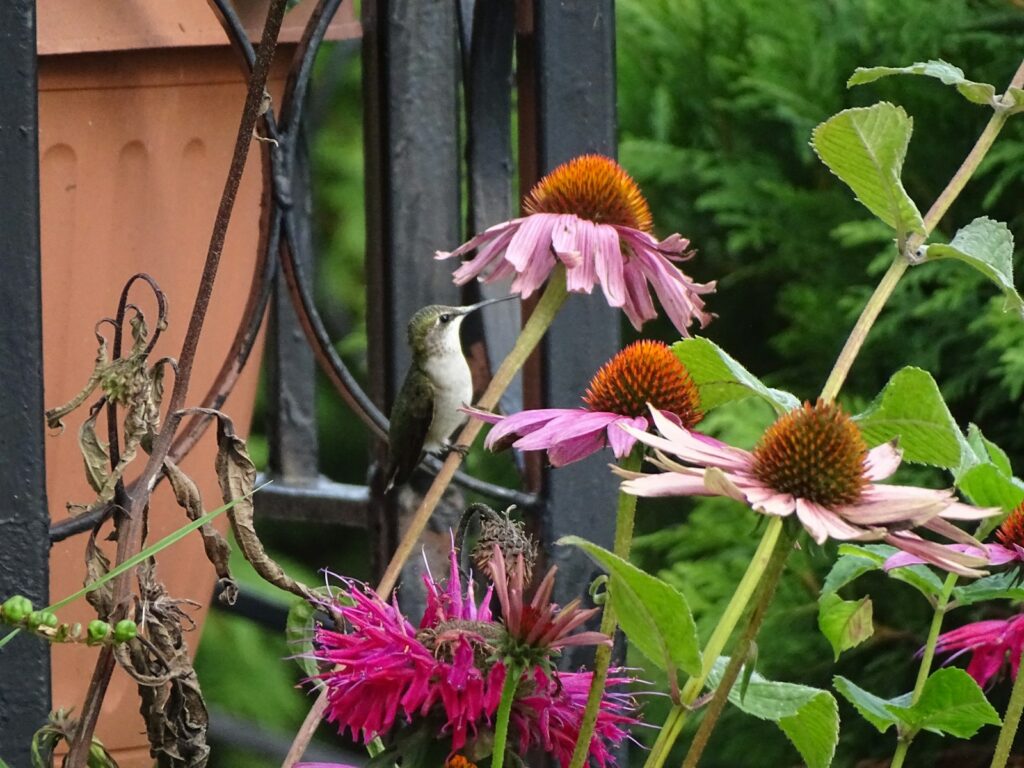
Keeping records of the ground-feeding birds that visit your yard provides valuable information while enhancing your birdwatching experience. Set up a simple journal or digital spreadsheet to track species, dates, times, and behaviors observed at your ground feeding stations. Consider installing a weather-resistant trail camera near feeding areas to capture images of shy or nocturnal ground-feeding species that might visit when you’re not watching. Share your observations with citizen science projects like Project FeederWatch or eBird, contributing to scientific understanding of bird populations and movements. Taking photographs of your avian visitors not only creates a personal record but also helps with identification and allows you to notice subtle changes in population or behavior over time.
Patience and Consistency
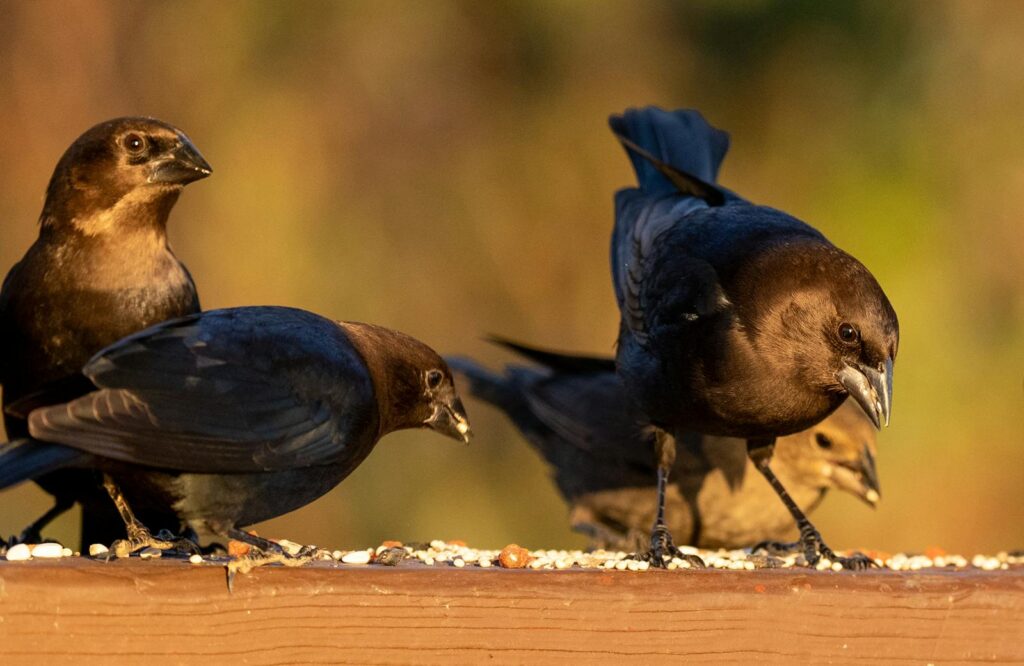
Attracting ground-feeding birds requires patience and consistent effort, as these birds may be naturally cautious about new feeding areas. Maintain regular feeding schedules once you begin, as birds quickly learn to associate specific times of day with food availability at particular locations. Don’t be discouraged if results aren’t immediate—it can take weeks or even months for ground-feeding birds to discover and trust a new feeding area, especially in urban environments. Continue providing fresh food and water even when visitation seems slow, as consistency builds trust with local bird populations over time. Remember that seasonal changes, neighborhood cat activity, or nearby construction can temporarily disrupt established feeding patterns, but persistent birds typically return when conditions stabilize.
Specialized Approaches for Specific Species
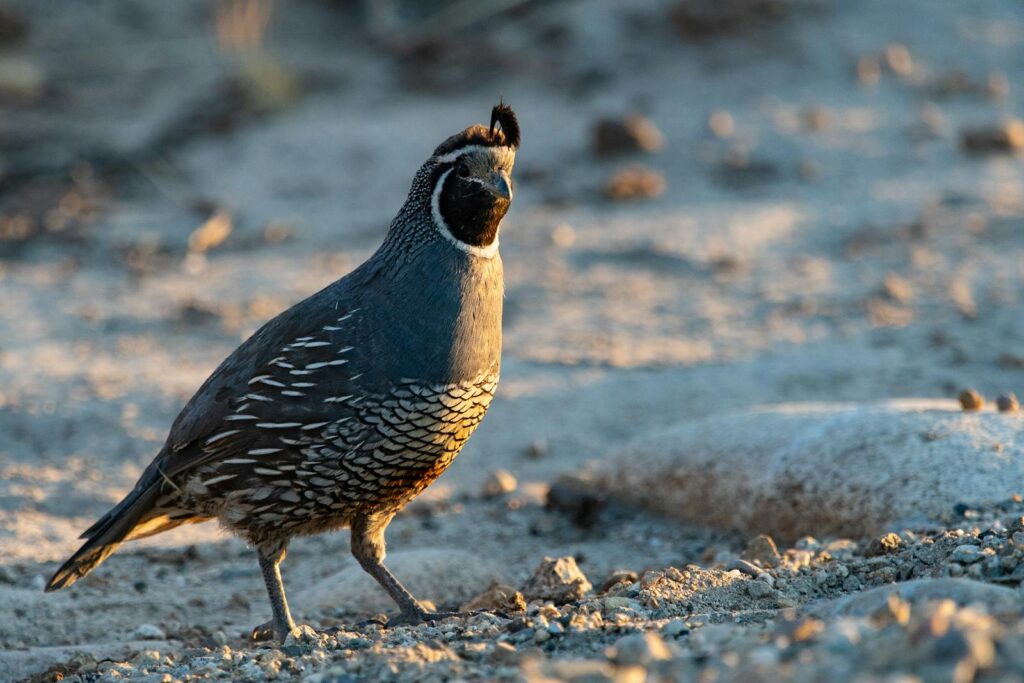
Different ground-feeding species have unique preferences that, when catered to, can dramatically increase your chances of attracting them specifically. For northern bobwhites and other quail species, create feeding areas with scattered millet and cracked corn adjacent to brushy cover where they can quickly retreat. Dark-eyed juncos, common winter visitors in many regions, particularly favor white millet and finely cracked corn scattered directly on the ground or on platform feeders positioned very low to the ground. To attract eastern towhees, create feeding zones near the edges of wooded areas and provide a mix of sunflower seeds and white millet scattered among leaf litter, mimicking their natural foraging environment. Mourning doves prefer open platform feeders with black oil sunflower seeds, white millet, and cracked corn, positioned where they have clear sightlines in all directions to watch for predators while feeding.
The joy of attracting ground-feeding birds extends beyond mere observation—it creates a meaningful connection with the natural world right in your own backyard. By implementing the strategies outlined in this guide, from providing appropriate feeding stations and food to creating safe, predator-aware environments, you’ll soon find your outdoor space transformed into a haven for diverse ground-feeding species. Remember that consistency and patience are key, as building trust with local bird populations takes time. The reward for your efforts will be the delightful presence of these fascinating creatures, whose behaviors and beauty bring nature’s rhythms right to your doorstep, creating moments of wonder and connection through every season.
